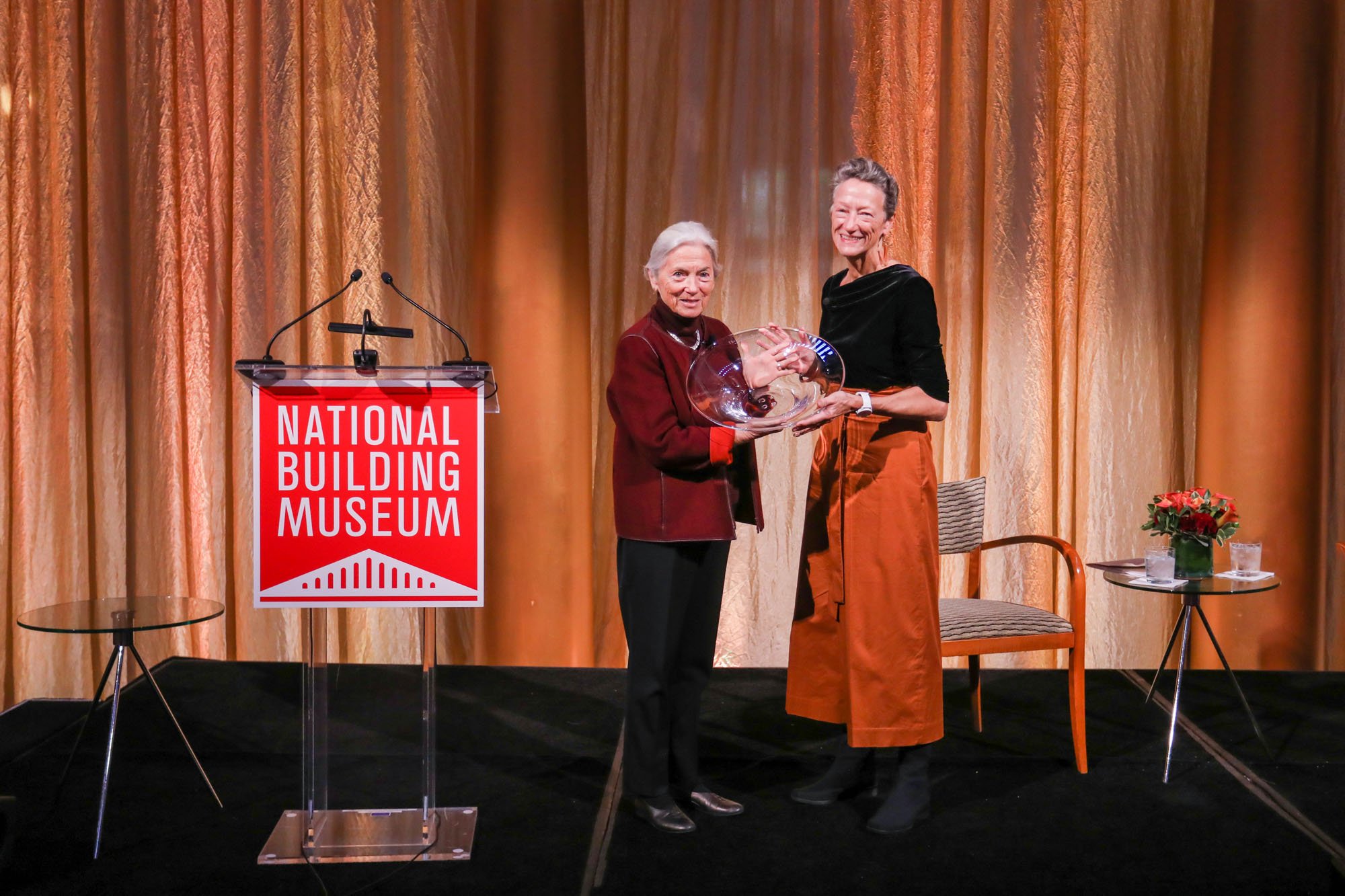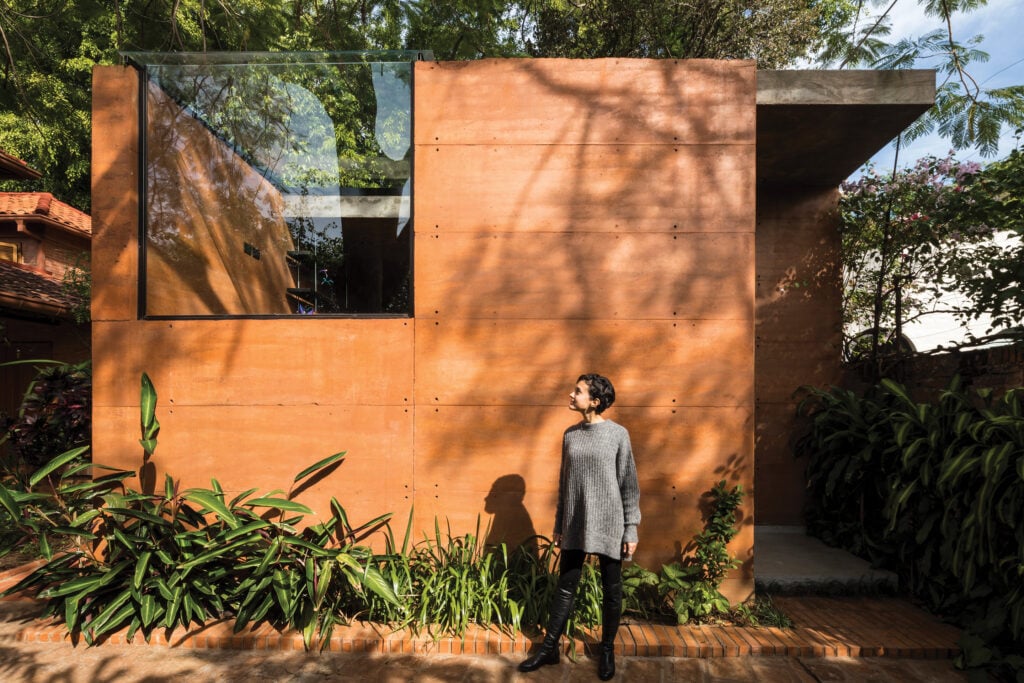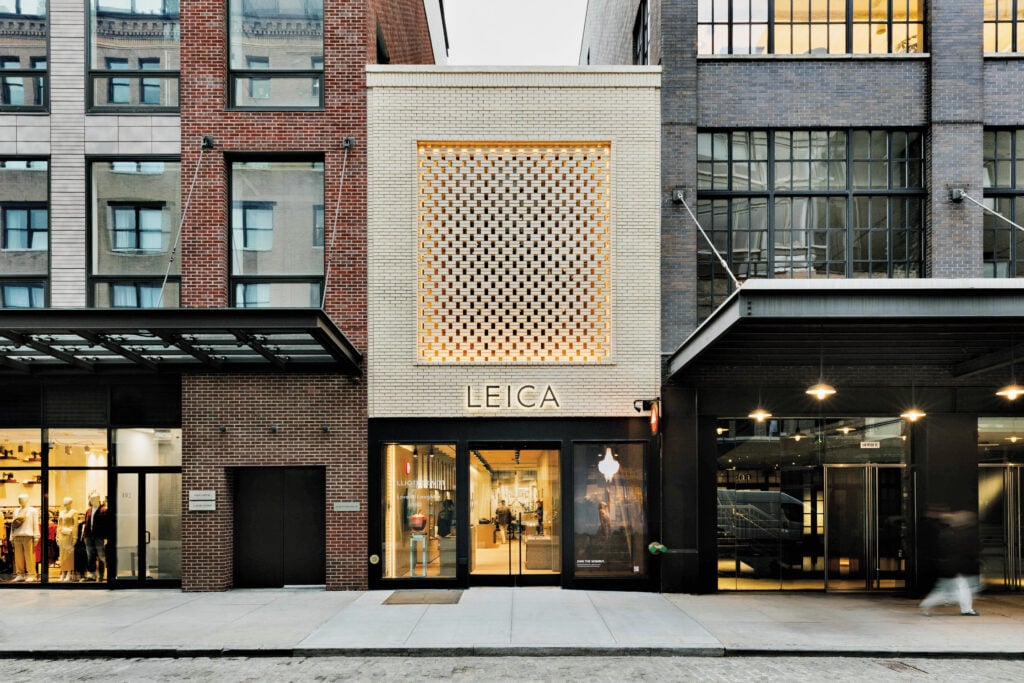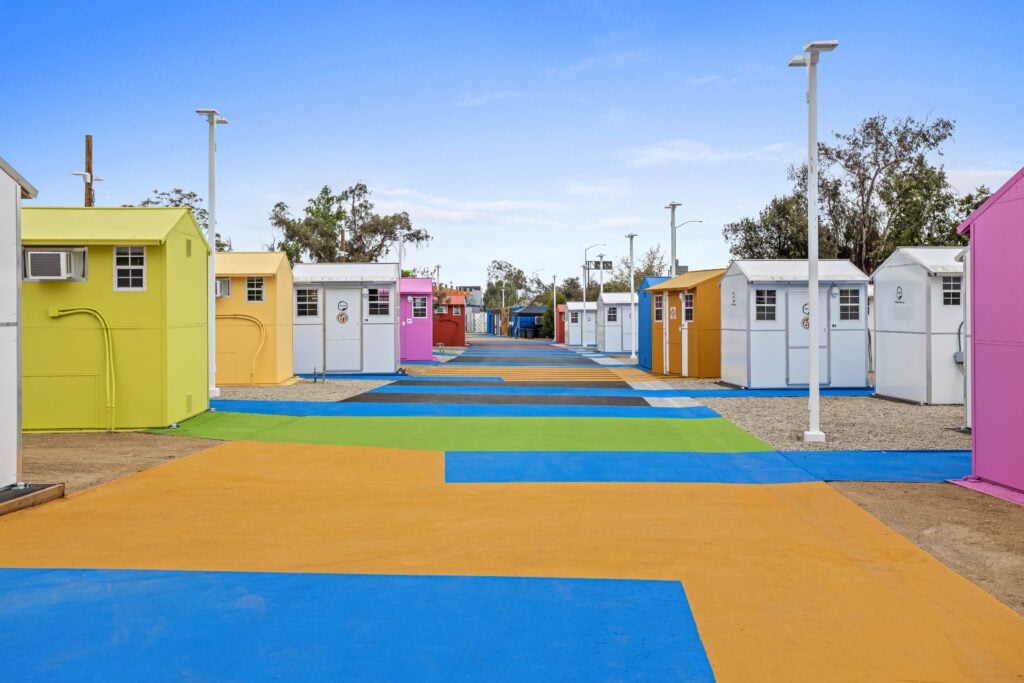
December 9, 2022
Dolores Hayden on the Politics of Care

This fall you gave a talk at the National Building Museum following your acceptance of the Vincent Scully Prize, an award given to designers, scholars, and critics who cover architecture, urban design, and landscape architecture. You spoke about care infrastructure and valorizing care. Why did you choose that topic?
I thought about it for a couple of weeks before I wrote the talk, and it seemed to me that care work is a topic that’s been very much in the news internationally, but less so in the United States. There was some discussion when that part of President Biden’s agenda failed to pass, but I think that discussion really should have been sustained and expanded. It seemed like a good moment to raise those issues again in Washington, D.C., and in the context of the whole world of the built environment that the museum represents.
For people who haven’t yet heard your talk, can you describe some of examples of care that you touched upon?
The first time that I looked at the subject of care work was 40 years ago. At that time, I was working on the history of housing and the ways that the history of housing and neighborhood design might intersect with women’s history, which was just then becoming a major field of investigation.
I discovered that there had been a number of 19th century and early 20th century feminist activists who argued that you couldn’t really expect that winning the vote would change women’s lives all by itself. And they said that, indeed, you had to imagine that homes and neighborhoods would be redesigned to value and support the labor of social reproduction, and to enable women to undertake either paid work or civic activities beyond their domestic sphere.
I wrote The Grand Domestic Revolution about those activists. I called them material feminists. They were American activists from the early times of the women’s movement, addressing urban history as well as questions of remuneration and recognition for nurturing work. I named them material feminists, because they insisted that material change in women’s economic and physical circumstances would be necessary. They demanded that the built environment change to recognize and support women’s unpaid nurturing work and to allow women greater access to public life.
I gave brief examples of those experiments, then I talked about World War II. Although women were honored as workers during the war, when Rosie the Riveter was laid off, wartime child care centers were shut down.
We put a great deal of national effort into building the postwar suburbs which were making houses cheaply available to white, male-headed families in segregated subdivisions. The movement to the suburbs erased many of those earlier questions about how care work might be recognized and honored.
Federal subsidies for mortgages, interstate highways, and green field commercial projects on rural land [facilitated] automobile-oriented sprawl, but politicians in Washington continued to reject care infrastructure as too expensive. They rejected paid maternity and paternity leave and rejected a national childcare program over and over. The first time it was rejected in 1971, it had bipartisan support, but President Nixon vetoed it. Politicians in Washington have also failed to pass a bill of rights for professional care workers.

How did the pandemic challenge existing care infrastructures?
Many, many people recognize that in the pandemic, care work was constantly challenged by the competition of paid work and other activities all taking place in the home when people were staying home to avoid COVID. We began to have newspaper reporters covering scenes of family life where there’s tremendous amount of conflict within the home. My phone was ringing for people who wanted to hear about my book from 40 years ago. And, of course, there were many questions about why there wasn’t enough childcare. Why parents who are juggling paperwork, supervising their children, their schoolwork are under a tremendous amount of pressure. We’ve all read those stories.
I asked the audience at the National Building Museum why was it so difficult to pass legislation to support care infrastructure? Why did tax credits expire, which was keeping so many children out of poverty?
Oftentimes, the policy choices that devalue care are made in institutions that don’t employ architects or planners. How do you think architects and planners can affect change and work to build care infrastructure when many of these obstacles are policy based?
There’s no reason that architects and planners can’t affect federal and state policy. Architects and planners have influence both as citizens and as professional groups. What I noticed was that, although the federal government has not been able to deal well with creating infrastructure for care work, many states and cities have stepped in to do more by building child care centers and elderly care centers. Architects and planners may worry about the real estate lobby, one of the most conservative lobbies in the US, but citizens everywhere support better care programs. It’s been encouraging to see that many young architects and planners have found ways to establish nonprofit practices.
Post-pandemic, we’re living in a world where there is tremendous upheaval and disruption to our domestic routines. Do you think that there are parallels between now and the era of the material feminists, and if so, what are they?
I think there will always be issues that come up around care work in a time of national emergency. In World War I or World War II, suddenly women were recruited to become industrial workers, to take the places of men who were fighting. I mentioned the women shipyard workers who had 24-hour childcare available to them to cover all three shifts. They had cooked food provided when they picked up their children at the end of their eight-hour shift. They had a sense they were valued workers who were going to be supported in their lives because they were both mothers and essential industrial workers. During the pandemic, we saw a lot of painted red hearts, but not quite as much recognition of the struggles of the essential health care workers, men or women, who had to perform as parents at the same time they were putting in long hours as doctors and nurses.

I’d like to switch gears a little bit and talk about your poetry. How would you say your work as an architect and historian connect with your work as a poet?
Well, I’ve been doing my work as an architect and historian for about 50 years. I’ve worked as a poet for 35 years or so. I was pleased that when the National Building Museum asked me if I would read some poems.
I chose “In the Middle Lane Leaving New Haven” which is a poem about commuting. I also read a couple of poems from my latest book, Exuberance, which was published just before the pandemic and is set in the early years of American aviation. The book is persona poems, first-person poems in the voices of stunt pilots, men and women, barnstormers from the early twentieth century who demonstrated airplanes for American citizens who had never seen them.
Why did you choose to focus on the early days of aviation?
I originally thought I wanted to write a book about risk and money. I was planning to write about 1929 and the Great Crash. I began to find terms like “crash” and “doom loop” used over and over. It turned out the jargon of 1929 about bank failures came from the barnstormers in the decade from 1910 to 1920. I thought, “Well, I better learn a little something about these barnstormers if their language was the most appropriate way to describe the financial crash.”
I would have never made that connection between aviation language and the chaos of the Great Crash.
I think this is the reason why I have pursued poetry along with other kinds of writing. Poetry gives one scope to make connections across time and space, to find linkages, to celebrate language as a way of recording and understanding events.
At some point when I was working on The Power of Place: Urban Landscapes as Public History, chronicling 10 years of work in L.A., I realized that I needed to make certain leaps in that book in order to be able to finish. It wasn’t that I was writing as a poet, but I was allowing myself to understand imaginative connections. That might not have been the ordinary way that I would proceed had I’d been writing some straightforward urban history. The combination of practice with theory demanded a few resonant connections that allowed me to finish that book. Writing Exuberance was just for pleasure. I had a great time doing it.
Dolores Hayden’s talk and conversation with Ellen Dunham-Jones is available on the National Building Museum’s YouTube. This interview has been edited and condensed for clarity.
Would you like to comment on this article? Send your thoughts to: [email protected]
Latest
Profiles
Equipo de Arquitectura Practices Material Sincerity
The Paraguay-based firm integrates material rigor and contextual design into its cultural and residential projects.
Profiles
Format Architecture Office Envisions an Expansive Design Process
Format Architecture Office (FAO) helps clients hone their vision with a focus on the driving forces behind each design decision.
Profiles
Pallet’s Tiny Home Villages Build a Bridge to Permanent Housing
The Washington-based company creates rapid response shelter villages that can be constructed in a matter of days.





